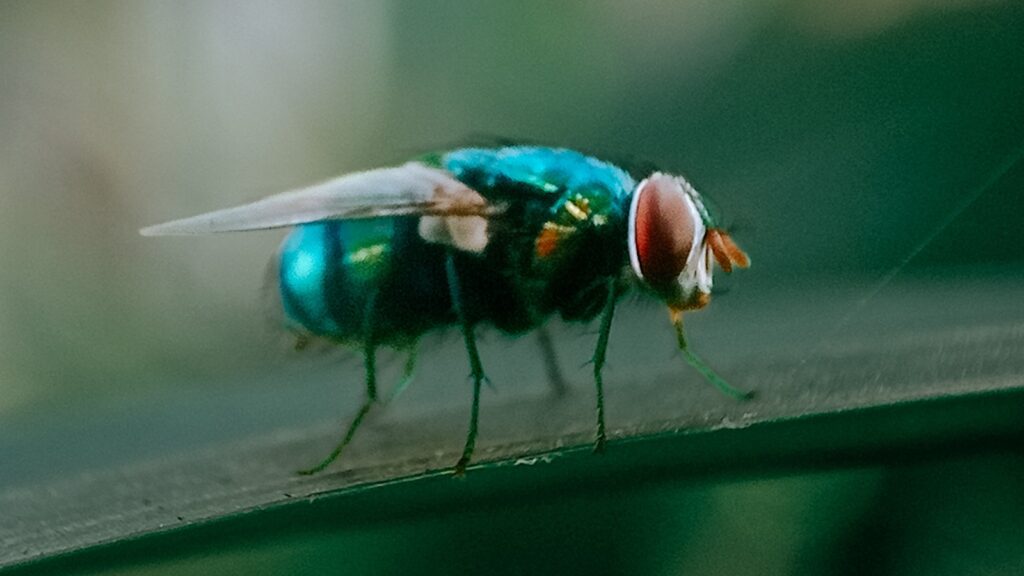Earlier this week, the Division of Well being and Human Companies (HHS) confirmed the first human case of a flesh-eating parasite within the U.S.
The affected person, a Maryland resident, had just lately returned from journey to El Salvador and was discovered to be contaminated with New World screwworm, an HHS spokesperson instructed ABC Information.
It comes amid an outbreak of the parasite amongst livestock in Mexico and nations throughout Central America.
This is what that you must know in regards to the infestation, together with the way it spreads, what the indicators are and the way it may be handled.
What’s New World screwworm?
New World screwworm (NWS) is a species of parasitic fly that feeds on dwell tissue and may trigger myiasis, which is an infestation of larvae, or maggots.
They’ll infest many kinds of animals, together with livestock, pets, wildlife and, in uncommon cases, people.
Cochliomyia hominivorax, the New World screw-worm fly, or screw-worm for brief, is a species of parasitic fly that’s well-known for the way in which during which its larvae (maggots) eat the residing tissue.
Ramdan Fatoni/Getty Photographs
“New World screwworm type of will get its identify as a result of these are little parasites and, after they really land on an open wound, they’ll screw down into the wound — that is how they burrow in — and truly eat tissue,” Lori Ferrins, affiliate professor of pharmaceutical sciences at Northeastern College, instructed ABC Information.
Ferrins defined {that a} feminine NWS will discover a residing host, land in an open wound and lay someplace between 200 and 300 eggs. After the eggs hatch, the maggots burrow additional into the tissue and trigger painful infestations.
NWS is just not sometimes discovered within the U.S. and is current in nations in Central and South America in addition to the Caribbean, in accordance with the Centers for Disease Control and Prevention (CDC).
NWS an infection may cause several symptoms together with pores and skin lesions that do not heal or worsen over time, painful wounds or sores, bleeding from open sores, feeling or seeing maggots in sore or a foul odor from the positioning of the infestation, in accordance with the CDC.
The maggots may also be discovered within the eyes, nostril and mouth, the federal well being company stated.
“The larvae of the New World screwworm are significantly nasty, and that is why it has been given this identify,” Dr. Shira Doron, chief an infection management officer for Tufts Drugs Well being System, instructed ABC Information. “Right here within the hospital, we could have a affected person are available in and, with a painful open wound, we could discover that there are larvae or maggots in it.”
How is it handled?
There’s at present no drug-only cure however there are efficient remedies for NWS infestation. If somebody believes they might be contaminated or sees and feels maggots in a wound or anyplace else within the physique, they need to contact a well being care supplier instantly, in accordance with the CDC.
A doctor must take away the maggots, which can require surgical procedure, the CDC says. The company stated sufferers shouldn’t attempt to take away or get rid of the maggots themselves.
“We wish to bodily take away these, kill them, and ship them off to a particular lab to see if we’re coping with one thing from one other nation, which then implies the necessity for a extra strong public well being response to stop it from turning into a widespread downside,” Doron stated.
How you can stop an infection
Doron stated anybody touring to elements of the world the place NWS infestation is frequent ought to keep any open wounds covered and use an insect repellent authorized by the EPA.
“Issues like lengthy sleeves, lengthy pants, tucking your pants into your socks, the entire strategies that you’ve got most likely heard of to keep away from insect bites, as a result of there are such a lot of well being implications which might be related to all kinds of bugs,” she stated.

On this undated file picture, cattle are proven on a street on Ometepe Island, Rivas State, Nicaragua.
STOCK IMAGE/Getty Photographs
Ferrins stated there are at present efforts to stop the parasite from crossing into the U.S., together with constructing a sterile fly manufacturing facility in Texas.
“There are steps we are able to take … to then management or remove the presence of [NWS}, just like we did in 1966,” she said. “And so the way that that was actually done was through breeding and dispersing sterilized male flies that actually will mate with the wild female fly.”
She went on, “Effectively, that just means that when the female screwworm fly goes on to kind of lay its eggs again, they don’t hatch. And so that effectively stops the life cycle.”
How concerned should we be?
Ferrins said the U.S. eradicated screwworm in 1966, and the country has been relatively free of the parasite aside from an outbreak in 2017 in the Florida Keys.
“The Florida Keys incident or infection period resulted only in infections in animals, so there was no human infection at that time,” she said. “So, it’s very rare to actually even have a human infection.”
Screwworm has not been detected in animals within the U.S., but the U.S. Department of Agriculture said in a press release earlier this month that NWS “is not only a threat to our ranching community — but it is a threat to our food supply and our national security.”
Ferrins added that the risk of infection is currently low in the U.S., so there is no cause for major concern.
“My advice to people would be: be on your guard but ultimately, there’s no active signs of infection here, locally acquired infection in the United States,” she said.
ABC News’ Youri Benadjaoud contributed to this report.

